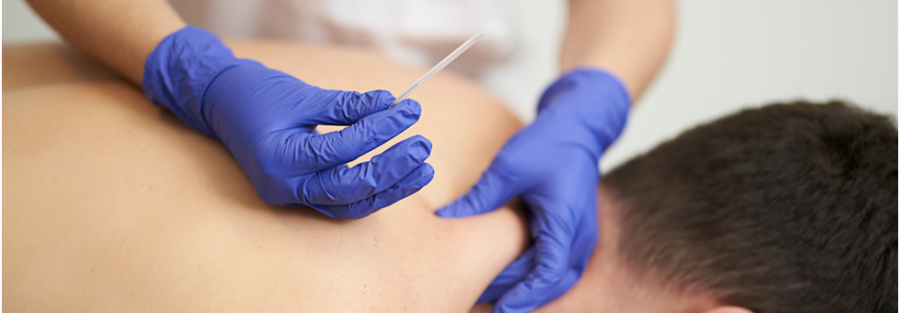Athletes who practice sports medicine always seek new and creative methods to improve their performance and hasten their recovery. While traditional methods such as rest, ice, compression, and elevation (RICE) remain fundamental, emerging techniques like dry needling are gaining recognition for their ability to address muscular dysfunction and promote optimal athletic function. At Scona Sports & Physiotherapy, we delve into the role of dry needling in sports medicine, exploring how this technique can benefit athletes in their pursuit of peak performance and rapid recovery.
Understanding Dry Needling
A therapeutic approach called dry needling entails inserting tiny needles into trigger points in muscles, tendons, ligaments, or close to nerves to lessen discomfort, extend the range of motion, and enhance muscle performance. To treat musculoskeletal pain and dysfunction, dry needling uses anatomical and neurophysiological principles instead of acupuncture, which targets energy pathways and originates in traditional Chinese medicine.
Enhancing Performance
To maximize their performance, athletes always continue challenging the boundaries of their physical capabilities. Dry needling offers several benefits that can support athletes in this endeavor:
Pain Reduction: Persistent pain can hinder performance and impede training progress. By targeting trigger points and releasing tension within muscles, dry needling can alleviate pain, enabling athletes to train more efficiently and give their best effort.
Improved Range of Motion: A limited range of motion can impair sports performance and raise the possibility of injury. Dry needling helps to release tight muscles and restore flexibility, enabling athletes to move more freely and efficiently.
Enhanced Muscle Activation: Optimal muscle activation is crucial for generating power and achieving peak performance. Dry needling can stimulate dormant muscle fibers, improving recruitment patterns and overall muscle function.
Accelerating Recovery
Athletic training requires recovery because it enables the body to heal and adjust to its demands. Dry needling can expedite the recovery process through the following mechanisms:
Increased Blood Flow: Needles during dry needling stimulate localized blood flow, delivering oxygen and nutrients to injured tissues while removing metabolic waste products. This accelerated circulation promotes tissue healing and reduces recovery time.
Reduced Muscle Tension: Intense training can lead to muscular tightness and soreness, prolonging recovery between workouts. Athletes can recuperate faster and resume training earlier thanks to dry needling’s ability to relieve muscle tension and soreness.
Facilitated Healing: Dry needling facilitates the body’s natural healing mechanisms by targeting trigger points and promoting tissue relaxation. It can accelerate the resolution of injuries such as muscle strains, tendonitis, and ligament sprains, allowing athletes to resume activity with a reduced risk of reinjury.
In the dynamic world of sports medicine, innovations such as dry needling offer promising avenues for enhancing athletic performance and expediting recovery. At Scona Sports & Physiotherapy, we recognize the significant role that dry needling can play in supporting athletes in their pursuit of excellence. Through this technique, athletes can fully realize their potential and attain their objectives with self-assurance and perseverance. If you’re ready to elevate your performance and optimize your recovery, contact us to discover how dry needling can benefit your athletic journey.


